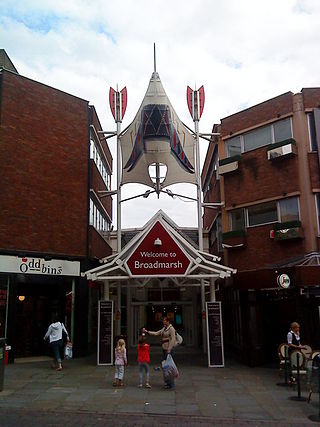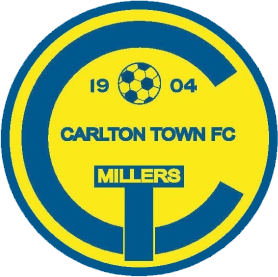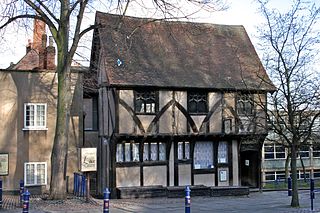
Nottingham is a city and unitary authority area in Nottinghamshire, East Midlands, England. It is located 33 miles (53 km) south-east of Sheffield and 45 miles (72 km) north-east of Birmingham. Nottingham is the legendary home of Robin Hood and to the lace-making, bicycle and tobacco industries. The city is also the county town of Nottinghamshire and the settlement was granted its city charter in 1897, as part of Queen Victoria's Diamond Jubilee celebrations.

Sneinton is a suburb of Nottingham and former civil parish in the Nottingham district, in the ceremonial county of Nottinghamshire, England. The area is bounded by Nottingham city centre to the west, Bakersfield to the north, Colwick to the east, and the River Trent to the south. Sneinton lies within the unitary authority of Nottingham City, having been part of the borough of Nottingham since 1877.

Nottingham city centre is the cultural, commercial, financial and historical heart of Nottingham, England, and represents the central area of the Greater Nottingham conurbation.

Broadmarsh is an historic area of Nottingham, England. The area was subjected to large scale slum clearance, creating large spaces used for regeneration. A shopping centre, car park, bus station and road complex created in the early 1970s cut-through the traditional thoroughfares from the city centre to the rail and canalside area. A large courts building was opened in 1981.

Carlton Town Football Club is a semi-professional football club based in Gedling, Nottinghamshire, England. Founded in 1904 as Sneinton Football Club, its early years were marked by considerable local success, leading to the club being described by the Manchester Courier in 1909 as "the leading amateur football club in Nottingham". Its reputation declined for several decades afterwards, with the team participating in obscure county divisions until the 1995–96 season saw the club join the nationwide league system. Carlton currently competes in the Northern Premier League Division One East at the eighth tier of the English football pyramid.

Watson Fothergill was a British architect who designed over 100 unique buildings in Nottingham in the East Midlands of England. His influences were mainly from the Gothic Revival and Old English vernacular architecture styles.

Thomas Chambers Hine was an architect based in Nottingham.

St. Stephen's Church, Sneinton is a parish church in the Church of England.

Broadmarsh bus station is a bus station serving the city of Nottingham, England.

Bromley House Library is a subscription library in Nottingham, England.
St. Paul's Church, George Street, was a Church of England church built as a chapel of ease to St. Mary's Church, Nottingham. It was opened in 1822 and closed in 1924.
St. Luke's Church, Nottingham, was a Church of England church in Nottingham at the junction of Carlton Road and St. Luke's Road near Sneinton between 1862 and 1923.
William Herbert Higginbottom JP was an architect based in Nottingham.

William Dymock Pratt was an architect based in Nottingham, England

The Nottingham and Nottinghamshire Bank was a joint stock bank which operated from its headquarters in Nottingham from 1834 to 1919.

Severn's Building is a Grade II listed building dating from the 15th century in the English city of Nottingham. Originally located in the city's Middle Pavement, it was relocated to the junction of Castle Road and Castle Gate around 1970.

Robert Clarke was an architect based in Nottingham.

Francis Williamson was a British surveyor and architect based in Nottingham.

Burrows Court is a high-rise residential building in the Sneinton neighbourhood in Nottingham, United Kingdom. Built in 1967 to a height of 61 metres (200 ft) with 21 floors, the tower block is the third tallest residential building in Nottingham. The building originally consisted of 130 one- and two-bedroom flats. Decommissioned by Nottingham City Council in 2005 due to low demand and drug dealing in the area, the building stood empty and was described as an "eyesore" until renovations were completed in 2021.

The Nottingham Corporation Electricity Department was responsible for the production and supply of electricity in Nottingham, England, from 1894 to 1948.






















